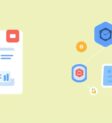
As technology advances, businesses are increasingly turning to customer support bots to enhance their customer service experience. These AI-powered assistants streamline communication, improve response times, and help companies deliver efficient, always-on support. In this article, we’ll explore what makes support bots valuable, how to build them, essential features, and strategies for ongoing optimization to meet evolving customer expectations.
The Evolving Role of Customer Support Bots
Customer support bots are rapidly transforming how businesses interact with and assist their customers. Driven by advances in artificial intelligence (AI) and natural language processing (NLP), these automated systems now handle a significant portion of customer inquiries across multiple channels, from chat widgets on websites to messaging apps and email. Companies large and small are deploying bots to provide instant, always-on help, reducing response times and freeing human agents to focus on more complex issues.
The rise of support bots is not just about automation—it’s about enhancing the customer experience. By resolving common questions quickly and accurately, bots streamline customer journeys and minimize frustration. At the same time, businesses benefit from operational efficiencies: support costs decline, staff workloads are balanced, and the ability to scale support up or down improves dramatically. As demand for seamless, responsive service grows, customer support bots are becoming a cornerstone of modern customer engagement strategies.
What Makes a Great Customer Support Bot?
A truly helpful support bot is defined by its ability to meet real customer needs with efficiency, accuracy, and empathy. Customers consistently value bots that provide clear, direct answers to their questions without unnecessary loops or jargon. Speed is a top priority—users expect responses in seconds, not minutes. Reliability is also crucial; a bot must handle common queries accurately and, when stumped, seamlessly transition users to a human agent without requiring them to repeat information.
Common shortcomings of support bots include limited understanding of natural language, rigid scripted responses, and an inability to handle complex or ambiguous requests. Customers often express frustration when bots fail to recognize context, offer irrelevant solutions, or misinterpret intent, leading to repetitive or circular conversations. These missteps erode trust and encourage users to bypass the bot entirely.
To exceed expectations, ensure your bot leverages up-to-date natural language processing (NLP) to interpret a wide range of phrasing and intent. Build a robust knowledge base with comprehensive, customer-focused content, and regularly update it based on real user feedback. Empower the bot with contextual awareness so it can recall information from earlier in the interaction. Most importantly, design seamless escalation paths to human support—providing a safety net that reassures users while streamlining resolution. This combination of speed, understanding, adaptability, and empathy is what transforms a standard support bot into a truly valuable customer service asset.
How to Build a Customer Support Bot: A Step-by-Step Guide
Building a customer support bot is both an art and a science. Consider the following key steps:
-
Step 1: Define Clear Objectives
Begin by identifying the primary goals for your customer support bot. Determine what issues the bot should handle—common FAQs, order tracking, or troubleshooting. Establish success metrics, such as reduced response times or increased customer satisfaction. -
Step 2: Choose the Right Technology
Select a platform or framework tailored to your requirements and technical expertise. Popular options include Dialogflow, Microsoft Bot Framework, or open-source libraries like Rasa. Ensure the chosen solution supports integration with your current communication channels (e.g., website chat, Facebook Messenger). -
Step 3: Prepare and Organize Data
Gather existing customer interactions, support transcripts, and FAQ documents. Analyze these sources to identify frequent queries and conversational patterns. Structure the information into intents (user goals) and entities (key pieces of information). This organized data will train the bot to recognize and respond appropriately. -
Step 4: Design the Conversation Flow
Map out typical conversations using flowcharts or scripting tools. Consider potential user responses, clarifying questions, and escalation paths for complex issues. Prioritize a user-friendly experience with clear, concise responses and the ability to hand off to a human agent when needed. -
Step 5: Build an Initial Prototype
Implement the conversation flow using your selected technology. Input sample data to train the bot on recognizing intents and extracting relevant information. Test the bot internally, refining responses and logic based on feedback from team members. -
Step 6: Iteratively Test and Improve
Launch the prototype to a limited audience or internal team. Collect transcripts and feedback, identifying areas for improvement. Expand the bot’s knowledge base and enhance conversation handling based on real-world interactions before a broader rollout.
Following these steps can help ensure your support bot is built on a solid foundation, with customer-centric goals and a structured approach to development.
Essential Features Every Customer Support Bot Needs
When building a customer support bot, certain features are non-negotiable to ensure reliable and efficient service. The first is 24/7 availability. Customers expect help whenever they need it, so your bot must be operational and responsive around the clock.
Multi-channel operation is equally essential. Modern customers seek support through websites, mobile apps, social media, and messaging platforms—your bot should seamlessly integrate with these touchpoints for a consistent experience.
Advanced language understanding is crucial for interpreting customer queries accurately. Natural Language Processing (NLP) enables bots to grasp context, handle varied phrasing, and respond to requests even when customers don’t use exact keywords.
Finally, a smooth handoff process to human agents is vital. When complex or sensitive issues arise, customers should transition effortlessly from bot to person without repeating their information. This integration ensures queries never get stuck and service quality remains high.
Equipping a support bot with these foundational features addresses customer needs, improves satisfaction, and boosts overall service efficiency.
Personalization and Conversational Intelligence
Personalization and human-like conversations are at the heart of effective chatbots. Users crave interactions that feel natural, relevant, and empathetic—not robotic. To achieve this, start by tailoring responses using data such as user names, preferences, or past behaviors. For example, greet returning users by name or reference their previous interactions to show genuine attention.
Empathy plays a crucial role in genuine conversation. Incorporate phrases that acknowledge user emotions, such as, “I understand how frustrating that can be,” or “That’s great news!” Adapt the tone and level of formality to match the context—use warm, friendly language for support interactions and concise, professional tones for business queries.
Use natural sentence structures, contractions, and varied vocabulary to avoid repetitive or scripted responses. When appropriate, sprinkle in a bit of humor or light-heartedness to create a sense of personality. Most importantly, listen actively by recognizing intent and asking clarifying questions when needed—this makes users feel heard and valued.
By blending personalization with an empathetic, conversational tone, you not only meet user needs more effectively but also foster trust and lasting engagement.
Training, Testing, and Evolving Your Support Bot
Effective support bots are never a finished product—they require continuous development to stay relevant and genuinely helpful. Regular training is essential, enabling the bot to expand its knowledge base and adapt to changing customer needs. This involves updating its responses with new information, incorporating feedback from real conversations, and addressing gaps where the bot might fall short.
User testing goes hand-in-hand with training. By simulating real-world scenarios or gathering feedback from actual users, businesses can assess how well the bot understands queries, solves problems, and delivers a smooth user experience. User testing uncovers areas where the bot may cause confusion, miss context, or provide inaccurate information, enabling targeted improvements.
Performance monitoring is the final, ongoing component. By tracking metrics such as resolution rates, customer satisfaction scores, and common handoff triggers to human agents, teams can quickly detect trends and proactively address issues. This cycle of training, testing, and monitoring ensures the support bot not only meets but exceeds customer expectations, making it a dynamic tool that evolves alongside your business.
Measuring the Success of Your Customer Support Bot
To accurately assess the performance of support bots, organizations must track a combination of quantitative and qualitative metrics. Core key performance indicators (KPIs) include:
- First Response Time (FRT): Measures how quickly the bot addresses a user’s initial query. Lower FRT correlates with higher user satisfaction.
- Resolution Rate: Captures the percentage of interactions where the bot successfully resolves the user’s issue without human intervention—a critical indicator of efficiency.
- Escalation Rate: Indicates how often queries are transferred to human agents, highlighting the bot’s limitations and surfacing areas for improvement.
- Customer Satisfaction Score (CSAT): Often gathered through post-interaction surveys, CSAT directly reflects user sentiment and the perceived helpfulness of the bot.
- Retention and Engagement Rates: Examines how often users return to interact with the bot, offering insight into the bot’s long-term value and usability.
Interpreting user feedback is another pivotal element. Quantitative results from surveys should be reviewed alongside qualitative comments to uncover recurring themes, pain points, or frequently misunderstood responses. Sentiment analysis tools can automate the extraction of broad user opinions from feedback at scale.
Several real-world use cases illustrate the transformative impact of well-measured and continuously optimized support bots. For example, a leading e-commerce platform implemented a multilingual support bot and saw its FRT drop from several hours to under a minute, while CSAT scores climbed by 20%. In the telecom sector, a provider leveraged a bot to automate common outage queries, reducing escalation rates by 35% and freeing agents for complex cases.
By consistently monitoring these metrics and studying feedback, businesses can learn from both successes and setbacks—driving iterative improvements and boosting the efficacy of their support bots.






